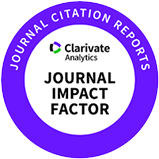Biodiversity and identification of spore-forming bacteria in raw milk from Korean dairy farm environment using the culturomics approach
Abstract
Spores present in milk survive heat treatments and can persist during downstream processing. In Korea, the development of the dairy industry is also growing. However, studies related to the distribution and diversity of spore-forming bacteria for the quality control of raw milk and dairy products are insufficient. This study aimed to evaluate the contamination levels of spore-forming species in raw milk derived from five dairy farm environments in Korea. The isolated strains were also identified using 16S rRNA sequencing and characterized based on the environmental factors in farms, which affect raw milk production. Representative spore-forming bacteria communities in the samples include Bacillaceae, Lachnospiraceae, Paenibacillaceae, and Caryophanaceae at the family level, and <italic>Bacillus</italic>, <italic>Clostridium,</italic> and <italic>Paenibacillus</italic> were the most diverse and predominant at the genus level. A total of 1,102 isolates of 16 genera could be assigned to the genus <italic>Bacillus</italic> (67.3% and 742 isolates), <italic>Clostridium</italic> (12.3% and 135 isolates), <italic>Paenibacillus</italic> (9.3% and 102 isolates), and <italic>Oceanobacillus</italic> (5.9% and 65 isolates). Among 173 species, the prominent members were <italic>Bacillus licheniformis</italic>, <italic>Bacillus kochii</italic>, <italic>Bacillus clausii, </italic>and <italic>Clostridium sporogenes</italic>. Twenty-seven spore-forming species (<italic>Bacillus licheniformis</italic>, <italic>Bacillus coagulans</italic>, <italic>Bacillus sonorensis</italic>, <italic>Bacillus sporothermodurans</italic>, <italic>Clostridium sporogenes</italic>, <italic>Clostridium tyrobutyricum</italic>, and <italic>Paenibacillus validus</italic>) detected in raw milk were the same species found in the dairy farm environments. Our result clearly shows that specific provinces have distinct proportions of spore formers that may cause spoilage of raw milk and milk products, such as cheese and yogurt. The biodiversity of spore-forming bacteria in the dairy farms were greatly influenced by several factors such as dairy farm conditions and milking environments. Recommending proper management of hygienic and production practices, including strengthening laws and implementing Hazard Analysis and Critical Control Points (HACCP) principles, would be effective in eradicating contamination during the production of raw milk.
















